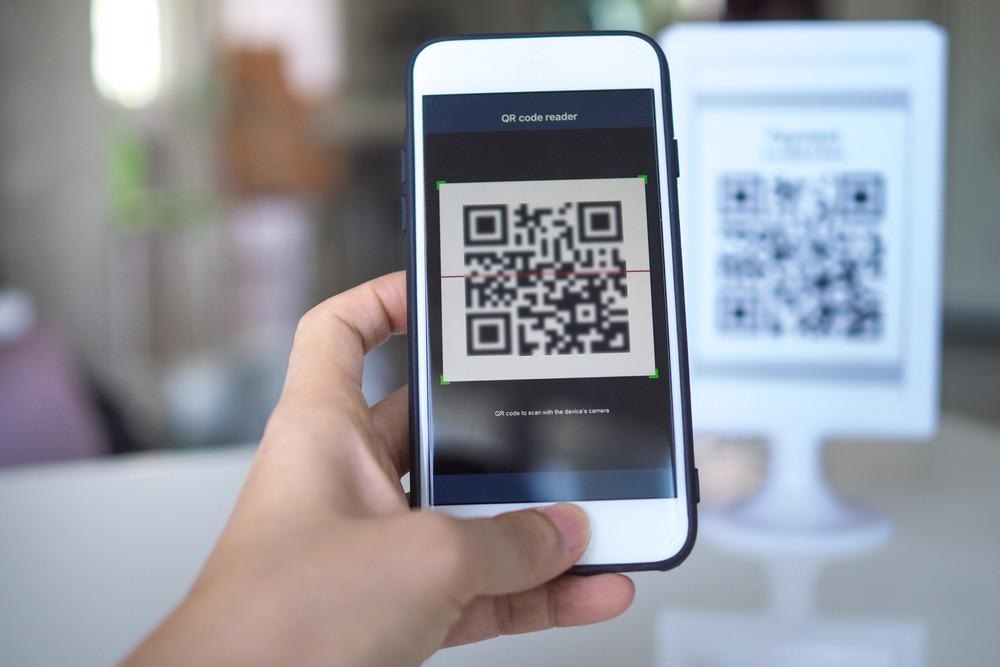Scientists have recently developed halloysite nanotubes (HNTs)-based self-healing hydrogels that can store UV-sensitive QR code information. This study is available as a pre-proof in the Journal of Colloid and Interface Science.

Study: Halloysite nanotube-based self-healing fluorescence hydrogels in fabricating 3D cube containing UV-sensitive QR code information. Image Credit: shisu_ka/Shutterstock.com
Hydrogel
Hydrogels are solid-soft materials made up of three-dimensional (3D) polymer networks. Apart from their water retention ability, hydrogels possess various tunable physical and chemical properties. Hence, these are applied for the development of polypeptides, stimuli-responsive materials, and carriers for drugs.
One of the most important features of hydrogels is their self-healing property, which enables the autonomous repair of fractures. However, hydrogels exhibit poor mechanical properties, which limits their applications in fabricating materials with stereoscopic architectures.
The incorporation of nanoparticles improves the mechanical property of hydrogel, but it reduces its self-healing properties.
Properties of Halloysite Nanotube
Scientists have developed halloysite nanotubes (HNTs) from aluminosilicate clay minerals, which is a natural product containing a large cavity volume with good biocompatibility. Owing to the presence of large cavities it exhibits a low relative density and can be dispersed in water exceptionally well due to its electric surface charge along the surface of the nanotube.
HNTs contain hydroxyl groups that interact with arylboronic acid groups in the crosslinking hydrogel systems and develop covalent bonds with the polymeric matrix. The addition of HNT enhances the roughness of the hydrogel surface, which is an advantageous adhesive process.
Development and Characteristics of a New Type of Fluorescence Hydrogel - A New Study
In a new study, a tetraphenylethylene (TPE)-containing crosslinker (M3) has been synthetically developed by functionalizing TPE with two arylboronic acid groups. The main advantage of incorporating arylboronic acid groups on the TPE unit is improved water solubility and making the product a difunctional crosslinker.
In this study, the authors developed a new method to synthesize aryl borate-bearing TPE derivative (M3). Firstly, they used 4-bromobenzophenone as the starting compound, which was catalyzed by titanium tetrachloride (TiCl4), to develop the bromine-bearing intermediate product (M1).
Secondly, M1 was treated with excess bis(pinacolato)diboron to form borate ester-containing TPE derivative (M2). Finally, M3 was developed by treating M2 with NaIO4 and, subsequently, incubating it with HCl solution at room temperature.
Scientists have described M3 and stated that it is soluble in most of the commonly-used organic solvents, including chloroform, dimethyl sulfoxide (DMSO), tetrahydrofuran, dimethylformamide (DMF), and methylene chloride. This is advantageous for its characterization in 1H NMR and 13C NMR spectroscopy, and Fourier Transform Infrared (FTIR) spectroscopy.
The material is soluble in water, which is an essential requirement to fabricate hydrogels. In strong alkaline conditions, reactions between polyvinyl acetate (PVA) and M3 result in the color change in the developed hydrogels.
To improve the mechanical compression strength, researchers incorporated HNTs in the reaction mixture containing PVA and M3. The authors noted that the HNTs were covalently embedded in the 3D polymeric network.
The newly developed material was validated via FTIR spectroscopy and scanning electron microscope (SEM) analyses, which showed that TPE-based crosslinker (M3) reacted with HNTs.
Researchers confirmed the TPE-crosslinked hydrogels (H1 and H2) via a contrastive test between H1 (hydrogels without HNTs) and physically-crosslinked PVA hydrogel. Owing to its chemically-crosslinked nature, the gel state of H1 and H2 (hydrogels with HNTs) was not destroyed even at 70°C.
Scientists investigated the mechanical properties (rheology properties) of H1 and H2 by a rotational rheometer, which revealed that the addition of HNTs increased their mechanical strength. However, more than 5% addition of HNTs affected the dispersibility in water.
Researchers reported that H2 was more stable and exhibited better self-healing properties than H1 and is a better candidate to fabricate 3D materials. They also reported that complete healing of H2’s cracks occurred with fewer rays of light and within 60 minutes, while H1 required 180 minutes for complete healing.
Application of Hydrogels for Storing Multiple Information
Scientists stated the new type of fluorescence porous hydrogel was developed by using arylboronic acid-containing TPE derivative as a crosslinking agent. When H2 was exposed to 365 nm light, it peaked at 457 nm and emitted visible blue fluorescence.
The improved compressive mechanical, fluorescence, and self-healing properties of the hydrogel inspired researchers to explore its application in the field of information encryption. In this context, researchers prepared hydrogel (H3) with no fluorescence-emission, in which 1,4- phenylenebisdiboronic acid served as the cross-linking agent. H2 and H3 were cut into 1 cm × 1 cm × 1 cm cubes and were joined by their self-healing property.
When these cubes were exposed to 365 nm light, each surface of the self-assembled cube displayed a quick response (QR) code-like graph, which served as self-encrypting data. These data could be read by a QR code scanner or other smart tools to obtain the information.
Reference
Zhang, B., Li, S., Wang, Y., Wu, Y. and Zhang, H., (2022) Halloysite nanotube-based self-healing fluorescence hydrogels in fabricating 3D cube containing UV-sensitive QR code information. Journal of Colloid and Interface Science. https://doi.org/10.1016/j.jcis.2022.03.025
Disclaimer: The views expressed here are those of the author expressed in their private capacity and do not necessarily represent the views of AZoM.com Limited T/A AZoNetwork the owner and operator of this website. This disclaimer forms part of the Terms and conditions of use of this website.